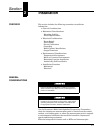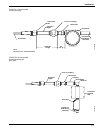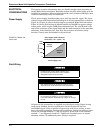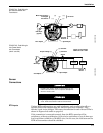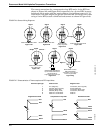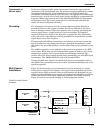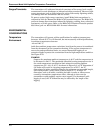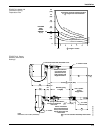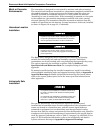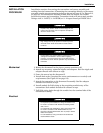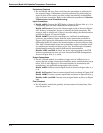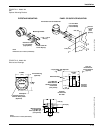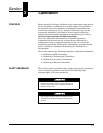
Rosemount Model 444 Alphaline Temperature Transmitters
2-8
Surges/Transients
The transmitter will withstand electrical transients of the energy level usually
encountered in static discharges or induced switching transients. However, high-
energy transients, such as those induced in wiring from nearby lightning strikes,
can damage both the transmitter and the sensor.
To protect against high-energy transients, install Model 444 transmitters in
conjunction with the Rosemount Model 470 Transient Protector. The Model 470
prevents damage from transients induced by lightning, welding, heavy electrical
equipment, or switch gears. Refer to the Model 470 Transient Protector product
data sheet, pub. no. 00813-0100-4191 for more information.
ENVIRONMENTAL
CONSIDERATIONS
Temperature
Environment
The transmitter will operate within specifications for ambient temperatures
between –25 and 85 °C. It will function, but not necessarily within specifications,
in ambient temperatures between
–40 and 100 °C.
Aside from ambient temperature variations, heat from the process is transferred
from the thermowell to the transmitter housing. If the process temperature is
near or beyond specification limits, use excess thermowell lagging or an
extension nipple to protect the transmitter from the high temperature condition.
See Figure 2-10.
EXAMPLE:
Suppose the maximum ambient temperature is 40 °C and the temperature to
be measured is 540 °C. The maximum allowable housing temperature rise is
the rated temperature specification limit minus the existing ambient
temperature (85 – 40), or 45 °C. As shown in Figure 2-9, an “E” dimension of
3.6 inches will result in a housing temperature rise of 22 °C. An “E”
dimension of 4 inches would therefore be the minimum recommended length,
and would provide a safety factor of about about 25 °C. A longer “E”
dimension, such as 6 inches, would be desirable in order to reduce errors
caused by transmitter temperature effect, although in that case the
transmitter would probably require extra support. If a thermowell with
lagging is used, the “E” dimension may be reduced by the length of the
lagging.




